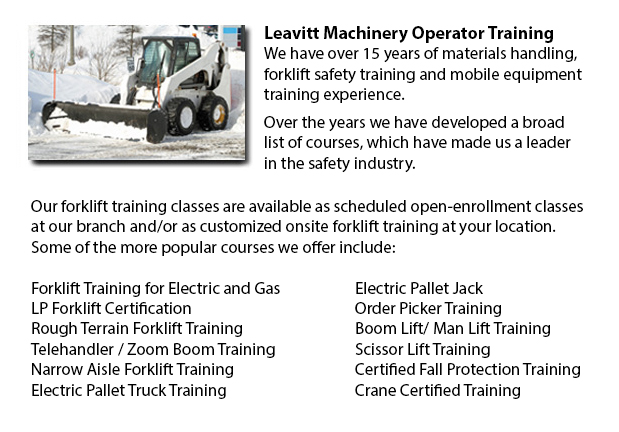
Skid Steer Ticket Prince Albert - The lift arms on the skid-steer loader are placed next to the driver along with pivots at the back of the driver's shoulders. These features makes the skid-steer loader different as opposed to the traditional front loader. Because of the operator's proximity to moving booms, early skid loaders were not as safe as conventional front loaders, particularly all through the operator's entry and exit. Modern skid-steer loaders now have various features to be able to protect the driver like fully-enclosed cabs. Similar to several front loaders, the skid-steer model can push materials from one location to another, can load material into a trailer or a truck and could carry material in its bucket.
Operation
There are several times where the skid-steer loader could be used in place of a large excavator on the job location for digging holes from within. To begin, the loader digs a ramp to be used to excavate the material out of the hole. As the excavation deepens, the equipment reshapes the ramp making it steeper and longer. This is a remarkably helpful way for digging under a building where there is not enough overhead clearance for the boom of a big excavator. Like for example, this is a common situation when digging a basement beneath an existing building or home.
The skid-steer loader attachments add much flexibility to the machinery. For example, traditional buckets on the loaders can be replaced accessories powered by their hydraulics consisting of pallet forks, backhoes, tree spades, sweepers, mowers, snow blades and cement mixers. Various other popular specialized buckets and attachments consist of trenchers, angle booms, dumping hoppers, wood chipper machines, grapples, tillers, stump grinders rippers, wheel saws and snow blades.
History
The 3-wheeled front end loader was invented during 1957, by Louis and Cyril Keller in their hometown of Rothsay, in the state of Minnesota. The Keller brothers made this equipment to help mechanize the process of cleaning in turkey barns. This equipment was light and compact and consisted of a rear caster wheel which allowed it to turn around and maneuver within its own length, allowing it to perform the same tasks as a traditional front-end loader.
During the year 1958, the Melroe brothers of Melroe Manufacturing Company in Gwinner, N.D. purchased the rights to the Keller loader. They hired the Keller brothers to continue refining their loader invention. The M-200 Melroe was actually the outcome of this partnership. This model was a self-propelled loader which was introduced to the market during nineteen fifty eight. The M-200 Melroe featured a two independent front drive wheels, a rear caster wheel, a 12.9 HP engine and a 750 lb lift capacity. By the year 1960, they changed the caster wheel with a back axle and launched the very first 4 wheel skid steer loader that was known as the M-400.
The M-400 shortly became the Melroe Bobcat. Normally the term "Bobcat" is used as a generic term for skid-steer loaders. The M-440 was powered by a 15.5 HP engine and had 1100 lb rated operating capacity. The business continued the skid-steer development into the middle part of the nineteen sixties and introduced the M600 loader.
-
Zoom Boom Training Prince Albert
Zoom Boom Training Prince Albert - Zoom Boom Training focuses on correctly training potential operators on variable reach forklifts. The training objectives include gaining the understanding of the machine's physics and to be able to define the job o... More -
Bucket Truck Training Prince Albert
Bucket Truck Training Prince Albert - The Vehicle-Mounted Aerial Work Platform or also called bucket truck training program is intended to reduce the chance of incident and personal injury when working with or in close proximity to bucket trucks by e... More -
Aerial Lift Training Prince Albert
Aerial Lift Training Prince Albert - An aerial work platform is a mechanized access platform. This device provides access to otherwise not accessible places for people or equipment. Likewise called an aerial device or elevating work platform, the mac... More -
Overhead Crane Ticket Prince Albert
Overhead Crane Ticket Prince Albert - The overhead crane is a common heavy machinery utilized in industrial settings. This particular machine is known as a bridge crane and comprises parallel runways spanned by a traveling bridge. The hoist is the co... More -
Scissor Lift Ticket Prince Albert
Scissor Lift Ticket Prince Albert - Scissor lifts have greatly benefited construction operations because the task that used to need a lot of effort and lots of people, can now be accomplished using the scissor lift and just one individual, the operat... More -
Manlift Training Prince Albert
Manlift Training Prince Albert - Different manlift training programs include the review and content of manlift devices. An essential part of the program is the practicum where students demonstrate their knowledge and practical ability to operate the... More -
Skid Steer Loader Training in Prince Albert
The engine powered skid-steer loader consists of a rigid and small frame, equipped along with lift arms which could attach to various industrial attachments and tools to be able to perform various labor saving tasks. Normally, skid-steer loaders are... More -
Crane Training School Prince Albert
Crane Training School Prince Albert - We provide industry relevant programs in our crane training school. The course will provide our trainees with learning outcomes matching the existing industry demands. Our small class sizes combine theory and han... More

Forklift Training Prince Albert
TOLL FREE: 1-888-254-6157
Prince Albert, Saskatchewan
forklifttrainingprincealbert.com
Email Us
About Us


